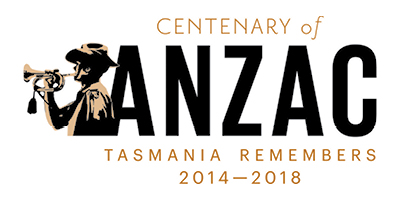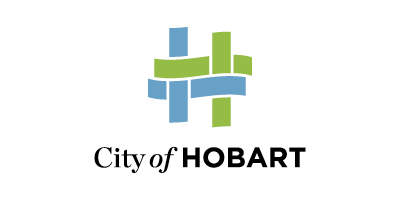Bridge over the Tasman Highway artist's impression.
Bicycle and Pedestrian Bridge over the Tasman Highway
The City of Hobart is working with Fulton Hogan – our bridge construction partner – to install a new, all-abilities pedestrian and bicycle bridge over the Tasman Highway to link two of Hobart’s most significant places of remembrance – the Cenotaph and Soldiers Memorial Avenue on the Queens Domain.
The bridge is timed to be completed by 11 November 2018 to align with the Centenary of the Armistice that ended the First World War on the 11th hour of the 11th day in the 11th month of 1918.
The overall cost of the bridge is $11 million. $8 million is being provided by the Australian Government through the Anzac Centenary Public Fund, with the Tasmanian Government initially underwriting this cost. The balance of the cost is funded by the City of Hobart.
The Centenary of ANZAC commemorates 100 years of service and sacrifice by Australian service men and women in all wars, conflicts and peacekeeping operations since World War One.
About the bridge
Bridge over the Tasman Highway artist's impression.
The 2013 Queens Domain Master Plan identified the need to construct a link over the Tasman Highway as one of a number of ways to enliven and further develop each of the principle precincts of the Domain as activity centres. The Master Plan states: ‘The Queens Domain is a public asset that should be developed as a major destination for residents within and visitors to Southern Tasmania. The Queens Domain should be the “jewel in the crown” of the city’s parks and open space.' The new bridge seeks to enhance access the Domain for education, recreation, health and enjoyment, for both Hobart residents and visitors.
The location for the new bridge builds on the City’s Inner City Action Plan, responding directly to key recommendations from the Gehl Architects Report, Hobart 2010 Public Spaces and Public Life – a city with people in mind. The report recommends making walking the most attractive mode of transport by giving high priority to pedestrians to create more lively and social environments. An important part of that aim is to provide convenient walking links to key destinations.
For more information, visit the Inner City Action Plan webpage and the Queens Domain webpage for the Queens Domain Master Plan 2013-33.
The pedestrian and cycling bridge will provide a safe connection between the Doone Kennedy Hobart Aquatic Centre, the many sporting facilities on the Domain and the Regatta Grounds, the intercity cycleway and Sullivans Cove.
One of Australia’s leading architectural firms Denton Corker Marshall (DCM) designed the bridge in partnership with Arup, Inspiring Place, and BPSM Architects.
The works on the bridge use local subcontractors and suppliers, along with steel fabricated by Haywards – a Launceston-based premier steel fabrication and engineering company. Protective measures are also in place to preserve vegetation and cultural heritage sites during the build.
Key features
A high quality design to provide a visually striking gateway into the city of Hobart.
Accessible to people of all abilities.
Well-lit for the safety of all users.
Over 6.5 m high for over-sized vehicles over two lanes of the Tasman Highway and a minimum of 5.4 m high over all other lanes.
FAQs about the pedestrian and bicycle bridge
Will the construction activities cause noise and will the environment be protected?
As this is a large-scale project there will be activities that will cause noise and dust emission. Best practice will be applied to protect the environment during construction. Environmental controls will be installed to protect sensitive receivers from the impact of construction activities. An Environmental Management Plan has been developed for the specific requirements of the project.
Water in combination with other approaches, may be used to reduce dust emission. There will be a minimal impact on existing memorials, including trees.
Will the view to the Cenotaph be blocked by the bridge?
The bridge is on a direct axis to the cenotaph, the Cenotaph is only blocked if the car on the highway is in a position where the abutments obscure the view.
There are few if any other locations where the view to the Cenotaph is blocked from view, any more than it is now.
Will the use of the Regatta Grounds for parking be impacted by the bridge?
There will be no impact from the bridge on the use of the Regatta Grounds for parking such as pre-Christmas and special event park and ride.
For more information please visit: www.hobartcity.com.au





















